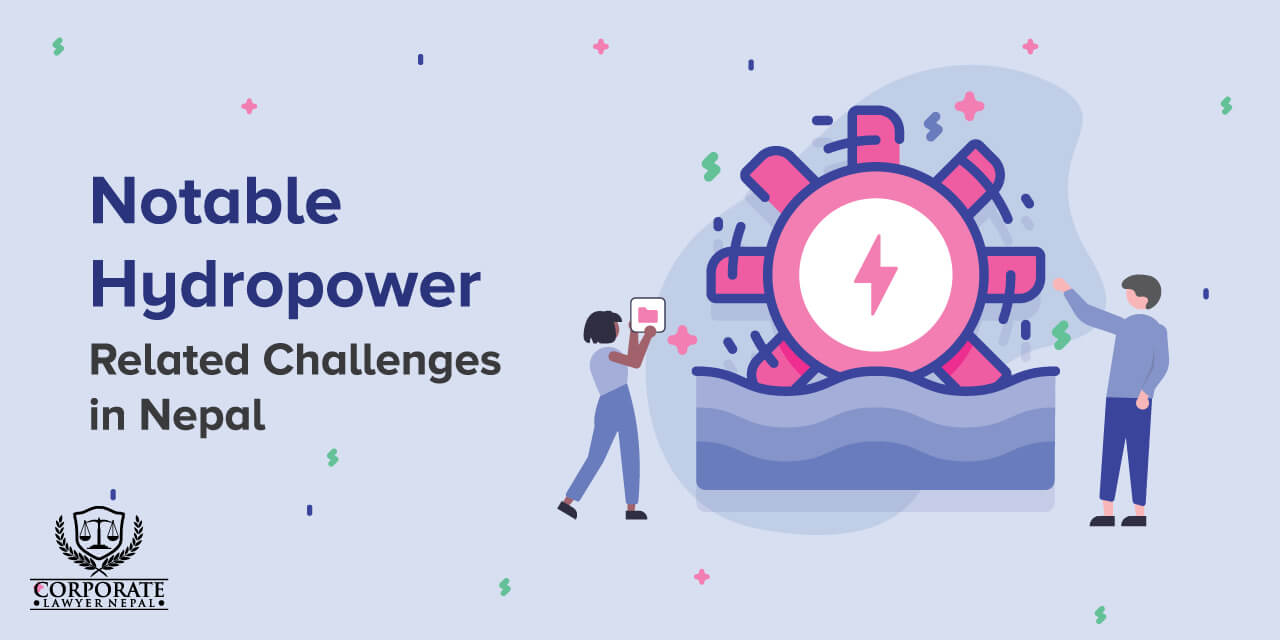Nepal is a mecca for investors due to its abundance of natural resources, including numerous rivers and streams. Hydropower is a clean energy form of electricity generated by flowing water. As a result, hydropower is the best renewable resource in Nepal. It can be said to have no production costs because it allows for the production of electricity over a long period of time.
It contributes to non-polluting benefits by emitting no heat or toxic gases, and it has low operational and maintenance costs, allowing for robust and scalable operations. The development of hydropower would be a vital contribution to Nepal’s development in terms of thriving economic growth, significant progress toward the overarching priority, and positive changes toward sustainable development.
Despite having the highest per capita hydropower opportunities in the world, Nepal lags far behind in capitalizing on its abundant hydro resources. The Nepali view of hydropower is that it should however, because of several highs and lows, the realization of all of these objectives has been unsatisfactory, owing primarily to inadequate planning and investment in generation, transmission, and distribution, as well as disruptions in project development caused by ineffective legislation and regulations.
Participatory policy and investment attempts must address the disparities, disparities, and anguish that exist between abundant renewable resources and a dearth of commercial energy services, with a greater emphasis on service quality with energy services in the short run, import duties explanation in the medium to long term, and structural reforms in the long run.
1. Challenges in Nepal’s Hydropower Sector
A great deal of appropriate insight in terms of national economic enhancement could be accomplished through the advancement of hydropower, but there are a number of operational and economic challenges that hydropower developers may face, as articulated below:
2. Inadequate Policy Interventions for Hydropower Development
In the early 1990s, Nepal issued the first detailed hydropower regulations, largely to address the shortfall and mitigate deforestation. Other objectives included fundraising from the non-public sector for building infrastructure and deploying local resources for hydropower projects. The slow pace of public-sector hydropower projects is a consistent setback for planners who hoped that a compelling hydropower policy would encourage new capital investment to Nepal. The three-pronged approach outlined below can help ensure Nepal’s long-term feasibility in hydropower development.
Another barrier to hydropower development in Nepal is the lack of properly developed infrastructure, such as access roads and transmission networks. The legal structure is also falling short of the effective governance level decisions that should be provided in order for Nepal to facilitate successful hydropower development.
3. Technical Challenges
Nepal is an inevitably implausible hydro resource-rich country battling for economic growth through hydropower development. However, numerous technological challenges had to be overcome for hydropower development due to unstable geography, geologic variation, geophysical restrictions, rough terrain, and a limited hydrologic and hydraulic network, among other factors. A few of Nepal’s technical challenges for hydropower development can be concisely defined as follows.
4. Geology is delicate
The Terai, the Siwialik (Churia) Range, the Dun valleys, the Mahabharat range, the Midlands, the Fore Himalayas, the Higher Himalayas, and the inner and Trans Himalayan Valleys are the eight district physiographic units of Nepal, each with its own district altitude, topographical, climatic, and vegetation characteristics. Furthermore, Nepal is geologically categorized into five main tectonic zones: the Terai, the Siwaliks, the lesser Himalaya, the higher Himalaya, and the Tibetan-Tethys Himalaya, that are segregated by class infrastructure and flaws. Two of these tectonic zones, the Main Central Thrust (MCT) and the Main Frontal Thrust (MFT), are substantially different from one another, and each of these zones is distinguished by its rock types, age, metamorphic rocks, constructions, and geologic record. The Highlands are the world’s most active and vulnerable mountain range, with live mountains and active tectonics. The Himalaya has continued to rise as the northward moving Indian plate collides with the more stable Tibetan block, and its rocks are increasingly under pressure.
Another barrier to hydropower development in Nepal is the lack of properly developed infrastructure, such as access roads and transmission networks. The legal structure is also falling short of the effective governance level decisions that should be provided in order for Nepal to facilitate successful hydropower development.
5. Risk of Foreign Exchange
A developer can borrow locally or from foreign institutions in relation to the same security. Because foreign currency is significantly larger than Nepalese currency,
- The foreign exchange problem can be reduced by having the loan transacted in local currency.
- Currency exchange revenue rate
- An insurance policy against cost escalation is required in the event of an increase in import costs.
6. Potential risks of Repatriation
This risk usually affects the creditor who is unable to resettle the funds of debt servicing, but a foreign equity investor is also prone to this risk pattern of enactment. Emerging economies have legislation that guarantees repatriation, allowing the creditor to make a loan without having to pay high interest rates. For hydropower projects in Nepal, the Foreign Investment and Technology Transfer Act of 1992 and the Electricity Act of 1992 guarantee repatriation.
7. Sovereign Risk (Country Risk)
Foreign investors face sovereign (country) risks such as government credibility, the possibility of confiscation, expropriation, and nationalization (CEN), shifts in the local political environment, and contract legitimacy. The World Bank Group’s multilateral Investment Guarantee Association (MIGA) guarantees against such potential consequences for a service charge, but the insurance requirement is still only available to foreign investors.
8. The risk of payment
Considering the lack of credit ratings (no credit histories, bad oversight, and strong technological leaders) of state-owned power stations, developers in several developing nations request a counter assurance to support the financial risk. The government is apparently mandated to ensure that the utility (energy buyer) pays its debts to the developers on time, and if it does not, the government instantly makes payment to reduce the power company irresponsibility. The way to minimize this risk is for the utility to establish a line of credit with the Independent Power Producers (IPP).
9. Development hazards (time and cost overturn)
Such risks result in revenue shortfall, price hikes due to the recession, a rise in the accrued interest of the bank debt, and even fines for delayed energy supply. One method of mitigating this risk is through insurance coverage (risks such as CAR, TAR, EAR, professional liability, and so on) and the enforcement of liquidated damage for deferred considerable execution of the task.
10. Disagreements and risks on a local scale
It is vital that key stakeholders, including the community living in the region where the hydro project will be implemented, work together. It is clear that the local community expects a fair share of the benefits that will accrue from the project development process. Water disputes may arise as a result of upstream hydropower and downstream irrigation. Local people’s demand may cause tensions over the right to energy resources, raising the cost of hydropower generation due to the stretching of time.
The most notable example is the Upper Tamakoshi (456 MW) project, the largest hydropower project currently under construction, which was impeded for several months due to the issue of higher share demand by local people. A few other projects, including Khimti (60 MW), Bhotekoshi (450 MW), Budhi Gandaki (1200 MW), and Upper Bafeli (50 MW), have encountered benefit-sharing issues. This risk can only be reduced by involving local people in benefit sharing. The most visible example is the Chilime (22 MW) hydropower project, which was built with private investment and workforce, with a 10% share going to residents of impacted VDCs and the Rasuwa district. As locals gained control of the projects, their participation in benefit sharing through designated shares aided in the new privileges of Chilime’s other subsidiary projects, notably Sanjen (42.5 MW), Upper Sajen (14.8 MW), as well as Rasuwagadhi (14.8 MW) (111 MW). It could imply that local level challenges could be mitigated if some project ownership is transferred to local residents in such a way that they profit from their resources.
Conclusion
The development of hydropower projects is time-consuming. The project has been in the works for quite some time. Hydropower requires a significant capital outlay. (b) The capital-intensive nature of projects; the most crucial issue is determining how to fund the hydropower project. The first step is to manage the investment for hydropower development, after which the registration procedures will begin. Because of the geographical constraints present in Nepal, the management of the hydropower project has been impeded. It frequently encounters geographically related disasters. Then there’s the issue of land acquisition. Local stakeholders have raised concerns about land acquisition. Similarly, there is a lack of long-term debt financing, as well as the credit risk of the power stations to whom they must sell power, all of which have affected hydropower development.
f you need such legal assistance, please contact us at +977-9849517735 or info@corporatelawyernepal.com.np
Alpana Bhandari is a founding partner and CEO of Prime Legal Consultants and Research Center. She graduated from American University Washington College of Law. She specializes in corporate/arbitration and family law.


Write a Comment